The HTC One M9 Review: Part 1
by Joshua Ho on March 22, 2015 7:00 PM EST- Posted in
- Smartphones
- HTC
- Qualcomm
- Mobile
- Snapdragon 810
- One M9
GPU Performance
Although CPU is often the focus of any given SoC, it’s important to avoid using a weak GPU as even cases as simple as web browsing or navigating through a UI can rely on the GPU for rendering, in addition to the common use cases of gaming. It’s also possible that GPUs can be leveraged for compute, which has great use for cases like image and video processing. To this end, the Snapdragon 810 has an Adreno 430 GPU that runs at 600 MHz, similar to the Snapdragon 805’s Adreno 420. As a result, all of the improvements we’re seeing from the Adreno 420 to the Adreno 430 are solely the result of architecture and driver improvements rather than clock speed increases.
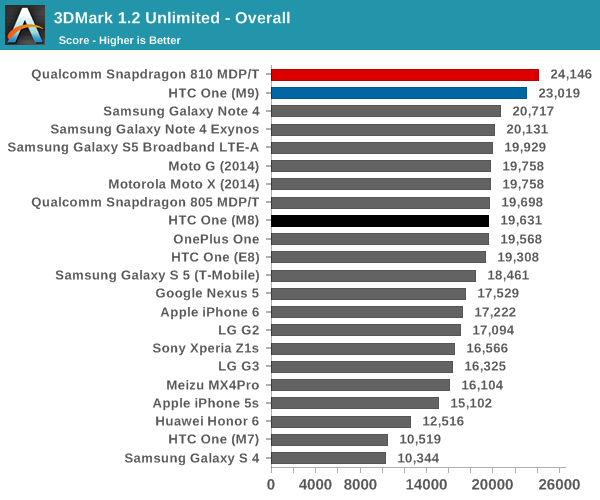

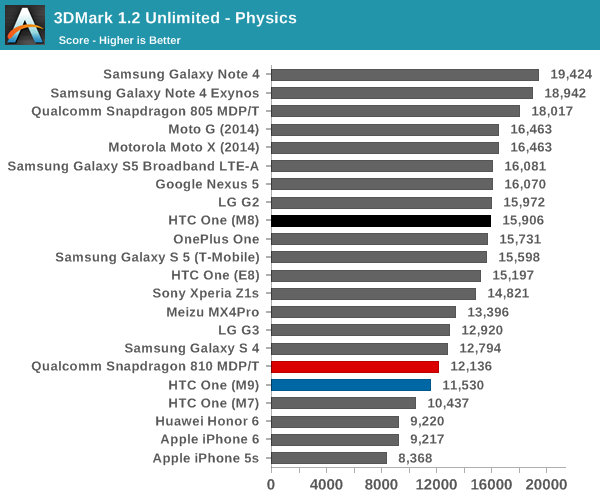
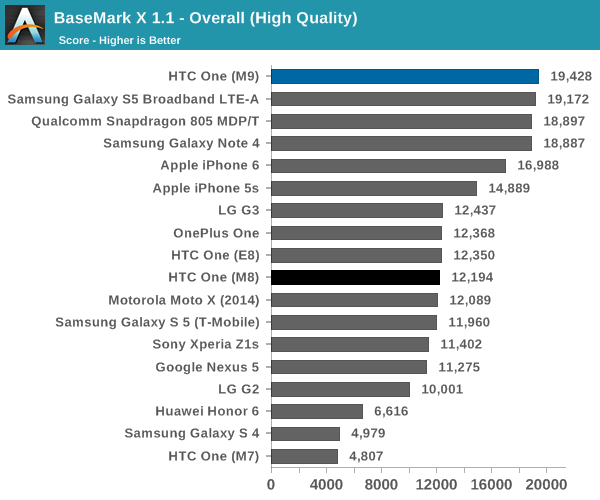
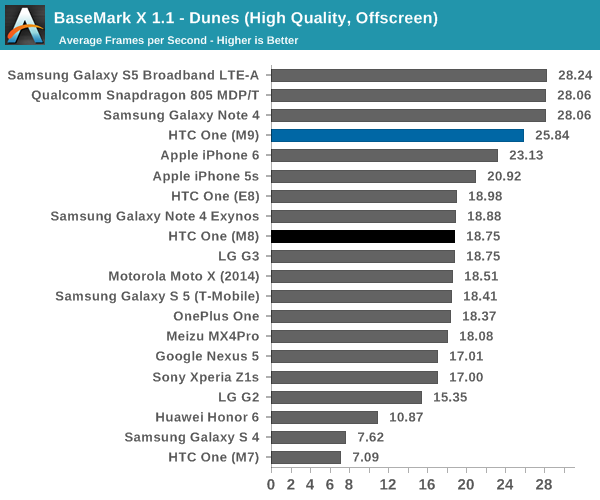
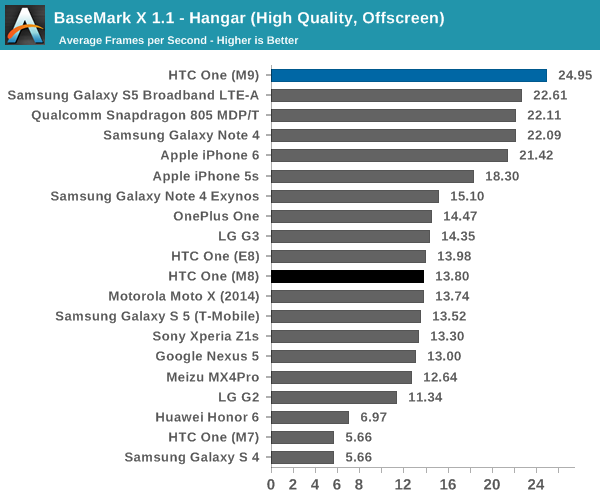

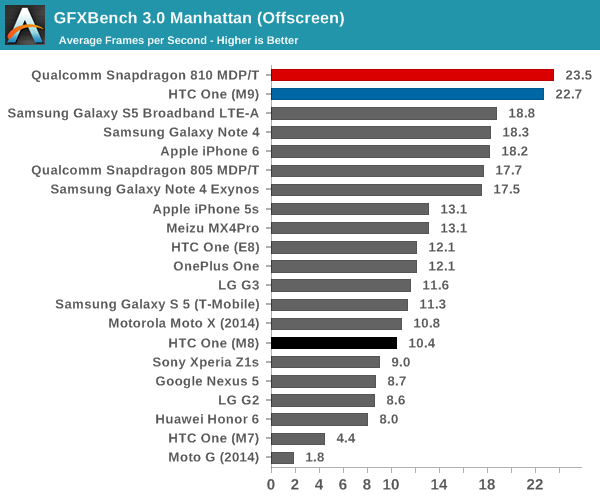
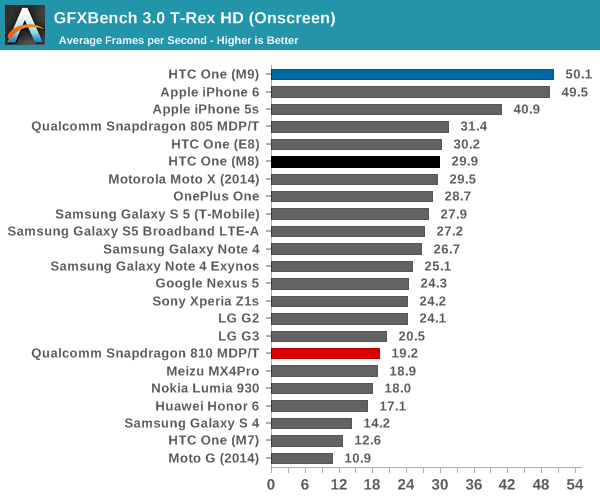
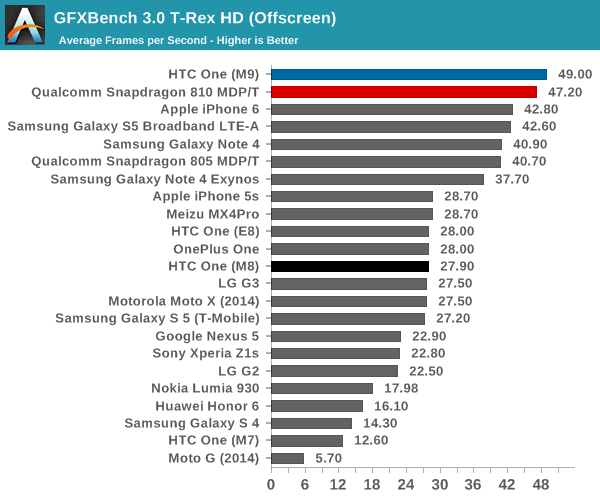
As one can see, the One M9 manages to deliver results that basically mirror what we saw with Qualcomm’s MDP/T, although there is some variance that can be seen. HTC did make the right call here with the 1080p display as we see a pretty massive jump in performance from the One M8 to the One M9 in GPU performance, and using a 1440p display would have eaten away most of these gains. I suspect that the hit to GPU performance with 1440p displays will be mostly compensated for by the next generation of SoCs, but for now I’m still not sure that it makes sense to push such a resolution on a phone.
NAND Performance
Storage performance is often an unnoticed aspect of any device, but it can often force itself to the foreground when it’s insufficient. Probably the most famous case of this is the Nexus 7 (2012), which was really the first device that caused people to start to look closer at NAND performance. While we’re close to a better solution for storage testing, for now we can still look at Androbench to get a decent idea of relative storage performance, although this is nowhere near as extensive as our SSD testing.
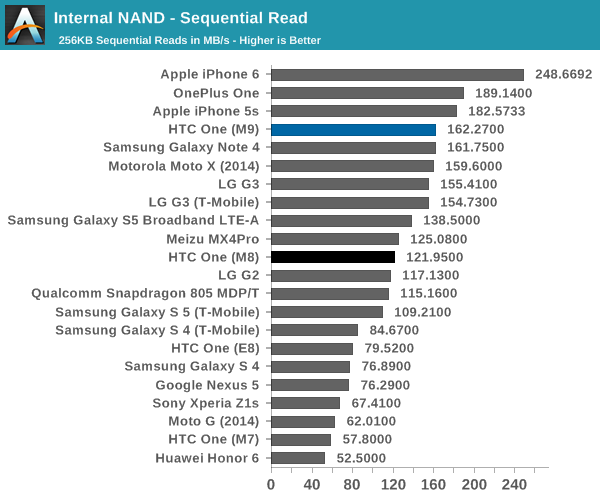
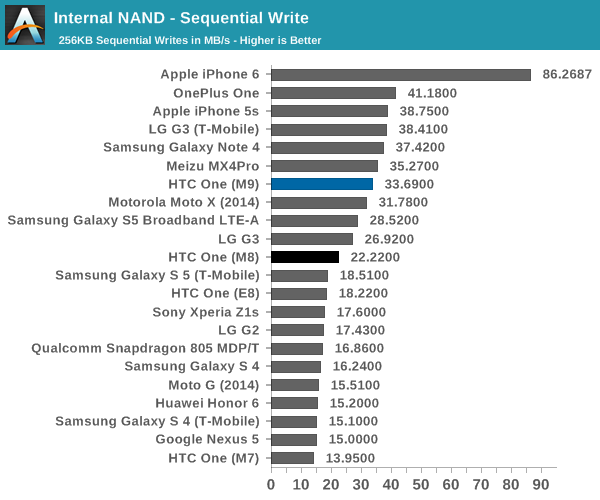
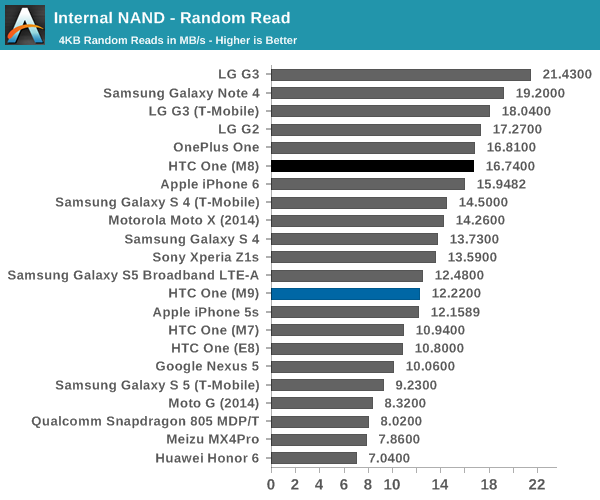
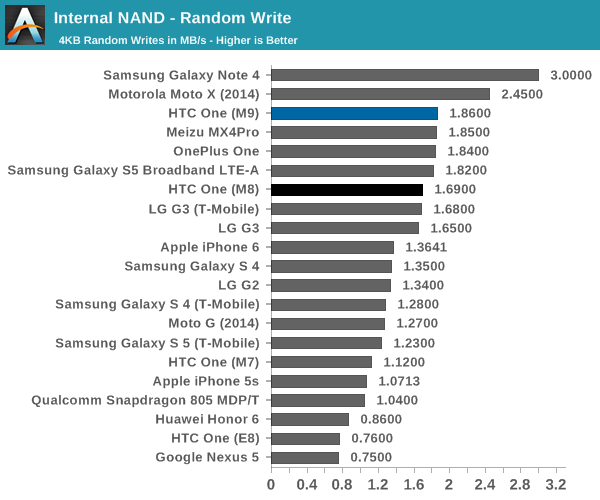
In this test, HTC does show some level of improvement over the previous generation but does regress a bit in the random read department. As far as I can tell, HTC is using Samsung’s eMMC solution here, with the model name BGND3R, as opposed to the One M8 which used a SanDisk eMMC IC. It's interesting to see how the One M9 still uses ext4 here, even though the Nexus 9 adopted F2FS. As far as I can tell, there seems to be a reason to adopting one filesystem over another but this reason is still unclear to me.










132 Comments
View All Comments
Gunbuster - Monday, March 23, 2015 - link
So let me get this right, It's practically indistinguishable from the old M8 design wise, has an under-clocked SOC, worse screen, no Qi, and they still haven't fixed the giant wasted HTC bezel space...flyingpants1 - Monday, March 23, 2015 - link
They just keep doing the same design over and over again... The metal is nice, but they should drop it IMHO.flyingpants1 - Monday, March 23, 2015 - link
In favor of wireless charging and larger battery. One Asian version of the HTC M7 HAD A 3200mah battery, but no LTE.pt2501 - Monday, March 23, 2015 - link
I think that with the recent change in software, Anandtech should be commended with releasing some review data on the HTC ONE M9 even in an incomplete state. This review might save someone who has been chomping at the bit from making a potential mistake.With that said and taking into account the disappointment with Snapdragon 810, I would ask and believe that it is about time we got a review of the Droid Turbo. It is one of the only phones to have the 805 refresh and i don't understand why such a major release for Motorola went without any review by Anandtech. I mean AT reviewed that POS Moto X but the real flagship phone went completely unnoticed. Aside from the GS6 and Sony Z3C there really are no other phones worth buying as of right now.
Please reconsider AT and review the Turbo. While the display is far from perfect, most other aspects are quite nice for the price.
SeannyB - Tuesday, March 24, 2015 - link
The Droid Turbo is made significantly less compelling by the fact that it's exclusive to Verizon, unlike the Moto X & Nexus 6. When was the last time AnandTech reviewed a Droid?DParadoxx - Monday, March 23, 2015 - link
Where is the Nexus 6 in these graphs?JoshHo - Monday, March 23, 2015 - link
Given that we have multiple S805 devices in the graphs we decided that it would be best to leave Nexus 6 results out. They can be seen in Bench or in previous reviews.hanseome - Monday, March 23, 2015 - link
I am sure that Samsung Galaxy S6 is the only phone announced with LPDDR4. I am really surprised to see HTC M9 with LPDD4.Madpacket - Monday, March 23, 2015 - link
Looks like the Note 4 is still the best Android phone. Disappointed by HTC here.Guest8 - Monday, March 23, 2015 - link
I can't believe my Nexus 5 still holds up LOL. I was thinking about getting the Zenfone 2 but 5.1 came out and fixed a lot of bugs and I am back to being happy again. My brother has the M7 I may just help him flash GPE to get 5.1 on his device and call it a day. I would love to see the Zenfone 2 in these benchmarks. I wonder if Anandtech will do a review?